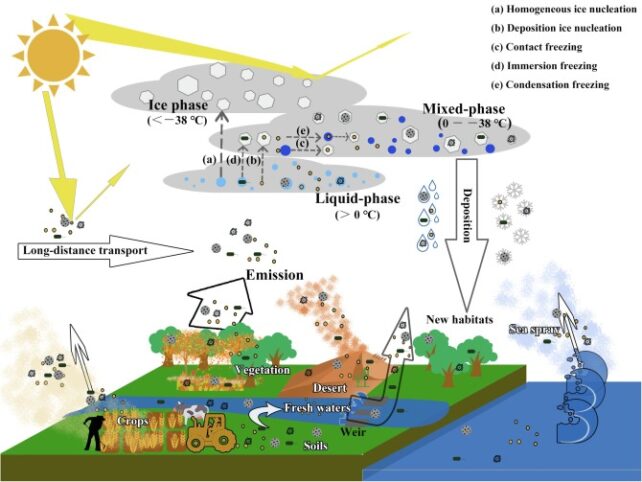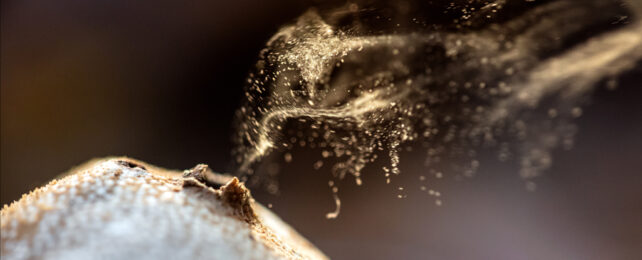We've long understood that clouds require the surfaces of tiny particles for water to condensate on. From sea salt and dust particles to microplastics, many substances can play the lead role in cloud nucleation.
Researchers have now conducted precise calculations that clear up uncertainty about how much biological aerosols contribute to this process above the Arctic.
"We could identify the proteinaceous component of ice nucleating particles, shedding light on their potential biological origin," explains University of Basel environmental geoscientist Franz Conen.
"Our findings unequivocally establish the prevalence of biological particles contributing to ice nucleation at Zeppelin Observatory."
Stockholm University physicist Gabriel Freitas and colleagues filtered micrometer-sized materials from the atmosphere above the observatory on Zeppelinfjellet mountain in Norway.
The team analyzed the samples using light scattering, UV fluorescence techniques, and transmission electron microscopy, gleaning enough information to identify and measure the smallest concentrations of each particle type.
"Precision is essential as we navigate through the challenge of detecting these particles in minuscule concentrations, akin to finding a needle in a haystack," says Freitas.
When temperatures and humidity are suitable, water within the atmosphere condenses on the tiny particles and freezes into the ice crystals that form clouds.
The nature of these particles remains a major source of uncertainty in climate models, and compared to other regions, the Arctic has relatively low aerosol concentrations, so subtle changes in these can have a profound effect on the weather.

Floating high amongst the atmospheric gasses, dust, and water vapor, the researchers detected biologically derived particles. These included fructose as well as the sugar alcohols mannitol and arabitol, which contributed more than 90 percent of all biological particles during the summer period.
"While arabitol and mannitol are present in various microorganisms, their presence in air are related to fungal spores, and might originate both from local sources or from long range atmospheric transport," explains Karl Espen Yttri, an atmospheric scientist at the Norwegian Institute for Air Research.
The level of the biological aerosols fluctuated with the seasons, Freitas and colleagues note. The highest concentrations appeared when temperatures exceeded -15 °C (5 °F), an ice nucleation temperature previously found to be linked to increased biological activity in the Arctic.
"We provide a direct observational link between biological aerosol particles and high-temperature ice nucleating particles in the Arctic," the researchers write in their paper.
Together, this suggests as more land and ocean are exposed due to Earth's warming temperatures melting more ice and snow, concentrations of biological particles are expected to increase, likely contributing to increased cloud cover and rainfall, which in turn further melts once-frozen landscapes.
"This research offers critical insights into the origin and properties of biological and ice nucleating particles in the Arctic," says Stockholm University environmental scientist Paul Zieger.
"[This] could enable climate model developers to improve the representation of aerosol-cloud interactions in models and reduce uncertainties related to anthropogenic radiative forcing estimates."
This research has been published in Nature Communications.
